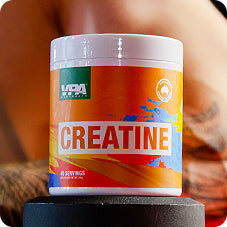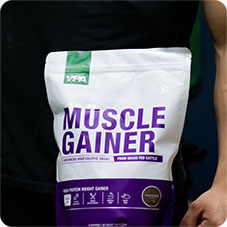Your Cart is Empty
Underrated Health Metrics You Shouldn't Ignore
November 30, 2023 6 min read

In the realm of health and wellness, it's crucial to understand that there's more to maintaining good health and fitness than just a steady number on the weighing scale. A broader spectrum of health metrics plays a significant role in determining our overallwell-being.
This article discusses theoften-overlooked health indicatorsthat canprovide a well-rounded perspective on our health andwell-being.
The world of health metrics may feel overwhelming to navigate, but we've streamlined itinto notable key areas that every individual should be monitoring for a holistic health overview.
Understanding Health Metrics: Discover What They Are and Why They Matter
Health metrics provide tangible, quantifiable data about an individual's health status. From the heart rate to sleep quality, these metrics shed light on various aspects of our health and give us the information needed to make necessary lifestyle changes.
-
Heart Rate Variability (HRV)
HRV measures the variation in time between each heartbeat. Monitoring HRV can help indicate your body's response to stress and fatigue, which brings us tothe question –
How can Heart Rate Variability (HRV) impact my health?
-
HRV reflects the balance between your sympathetic nervous system (fight-or-flight response) and your parasympathetic nervous system (rest and digest response). A higher HRV is generally associated with a healthier autonomic nervous system, indicating better adaptability to stressors.
-
Stress Management:HRV can also be an indicator of your ability to manage stress. Lower HRV may suggest a higher level of chronic stress, while higher HRV is associated with better stress resilience. Stress management is crucial for overall health because chronic stress can contribute to various health problems.
-
Cardiovascular Health:Reduced HRV has been linked to an increased risk of cardiovascular diseases, including heart attacks and arrhythmias. It can also be a marker for hypertension and other cardiovascular issues. High HRV indicates better cardiovascular fitness and resilience to stress.
-
Physical Fitness: Regular physical activity and aerobic exercise can increase HRV, which is a sign of improved cardiovascular fitness. Athletes often have a higher HRV due to their well-conditioned cardiovascular systems.
-
Sleep Quality:HRV can be used to monitor sleep quality. A decrease in HRV during sleep may indicate sleep disturbances or sleep disorders.
Note:It's important to note that while HRV can provide valuable insights into your health, it should be interpreted in the context of your overall health profile. It's not a standalone diagnostic tool, and any concerns about your HRV should be discussed with a healthcare professional who can provide a comprehensive assessment and guidance on improving your health if necessary. Lifestyle factors such as regular exercise, stress management, and healthy eating can positively impact HRV and overall health.
-
Resting Heart Rate (RHR)
The resting heart rate is the number of times the heart beats per minute when at rest — such as when you are relaxed, sitting, or lying down. Resting heart rate varies from person to person. Knowing yours can give you an important sign of your heart health.
Your resting heart ratetoo, can indicate your cardiovascular fitness level and potential health risks. A lower resting heart rate often signifies more efficient heart function, as well as indicating that your body is relaxed.
What is a normal resting heart rate?
For adults, a normal resting heart rate ranges between60 and 100 beats per minute. Usually, a lower resting heart rate means your heart is working more efficiently and is more fit.
For example, an athlete might have a resting heart rate of around 40 beats per minute.
Why is Resting Heart Rateconsidered an important health metric?
- Cardiovascular Health:RHR is closely related to the health of your cardiovascular system. A lower resting heart rate is generally associated with better cardiovascular health. It indicates that your heart is efficient at pumping blood, and that your blood vessels are in good condition.
- Fitness Level: RHR can be an indicator of your overall fitness level. Regular physical activity and cardiovascular fitness can lead to a lower resting heart rate. Athletes often have very low RHRs because their hearts are conditioned to pump more blood with each beat.
- Stress and Relaxation: A lower RHR can also be a sign of better stress management and relaxation. High levels of stress and anxiety can elevate your heart rate, so a lower RHR may suggest that your body is well-rested and less stressed.
- Long-Term Health: Studies have shown that a high resting heart rate, especially when it remains consistently elevated over time, can be associated with an increased risk of various health conditions, including cardiovascular diseases, hypertension, and even premature mortality. Monitoring RHR can provide insights into your long-term health risks.
- Recovery and Overtraining:Changes in your RHR can indicate how well your body is recovering from exercise. An elevated RHR might suggest that you need more time to recover between workouts, while a consistently low RHR can be a sign of overtraining.
- Medication Effects: Some medications and medical conditions can affect your heart rate. Monitoring your RHR can help you and your healthcare provider assess the effectiveness of treatments or identify potential side effects.
- Early Warning Sign: In some cases, a significant increase in RHR over a short period could be an early warning sign of an underlying health issue that needs attention, such as an infection, thyroid problem, or anemia.
-
Blood Oxygen Levels
Once you inhale oxygen, it goes through your lungs and into your bloodstream. The amount of oxygen in your blood is called yourblood oxygen leveloroften referred to as oxygen saturation or SpO2 (peripheral capillary oxygen saturation).
Your body needs a certain amount of oxygento function properly, and low blood oxygen levels can lead to serious complications. Regular checks can help detect problems related to respiration and circulation early before they become serious.
Hemoglobin is a protein in red blood cells that binds to oxygen in the lungs and carries it to tissues throughout the body. In a healthy individual, nearly all hemoglobin is saturated with oxygen when blood leaves the lungs. This results in a normal blood oxygen level, which is typically around 95% to 100%.
How can monitoring Blood Oxygen Levels improve my health?
Monitoring blood oxygen levels is essential because oxygen is critical for the proper functioning of cells and tissues in your body. If blood oxygen levels drop significantly below the normal range, it can lead to hypoxemia, which can result in symptoms like shortness of breath, confusion, rapid heart rate, and, in severe cases, tissue damage or organ failure.
It also helps detect any health problems at an early stage.A sudden or sustained drop in oxygen saturation may be an early warning sign of underlying respiratory or cardiovascular issues, allowing for timely intervention and treatment.
Blood oxygen levels can be measured using a device called apulse oximeter, which is often clipped onto a finger or earlobe. The pulse oximeter uses light to determine the percentage of oxygen-saturated hemoglobin in the blood. This is a non-invasive and painless way to assess oxygen levels.
These are just three of the underrated health metrics that we think deserve more recognition apart from the common metrics like BMI, BMR, sleep quality and more. By incorporatingandmonitoring these health metrics into your daily routine, you can take control of your health data and use it to make informed decisions about diet, exercise, and other lifestyle habits. It's important to understand that these metrics are interlinked - improvement in one can oftenlead to improvement in others.
Today it is so much easier to measure these health metrics as tools or technology are often integrated into smart watches and fitness wearables that help keep track of your health daily.
Bottomline
In essence, our health is a complex puzzle, and these metrics are the pieces that help complete the picture. These health metrics are tools to help you understand and manage your health better. They provide vital information that can empower you to make informed decisions about your diet, exercise, sleep, and overall lifestyle habits.
Remember, thegoal is not to achieve perfect numbers but to create a healthier, happier life. So, start tracking these metrics today and take proactive steps towards better health. It's never too late to start caring for your health andwell-being. You have the power to change your health trajectory, one metric at a time.
Also in Training

Boosting Your Health: Understanding Aerobic and Anaerobic Metabolism
July 22, 2024 4 min read
Learn about the key differences between aerobic and anaerobic metabolism, and how to optimize your workouts for better health and fitness. Discover the benefits and performance-boosting potential of combining these two metabolic powerhouses.
Read More
Smash Through the Wall: How to Increase Your Lactate Threshold for Running Glory
July 08, 2024 4 min read
Learn science-backed strategies to boost your lactate threshold, enhance running performance, and achieve your fitness goals. Discover expert tips and techniques here.
Read More
The Ultimate Guide to Cross-Training
July 01, 2024 5 min read
Learn about cross-training, crafting a plan, tailoring for different fitness goals, and activities beyond the gym. Discover the ultimate fitness guide at VPA.
Read More Recent Articles
- Boosting Your Health: Understanding Aerobic and Anaerobic Metabolism
- Smash Through the Wall: How to Increase Your Lactate Threshold for Running Glory
- The Ultimate Guide to Cross-Training
- Embrace the Cold: How to Stay Active and Healthy Throughout Winter Down Under
- What is Hyrox?
- Mastering the Pull-Up
- Building a Champion: Why Cardio and Strength Training are Your Fitness Dream Team
- Beyond the Six-Pack: Building a Strong Core for Everyday Life
- Routine and Discipline – The Backbone of Fitness
- Calisthenics for Beginners
${{amount}}













